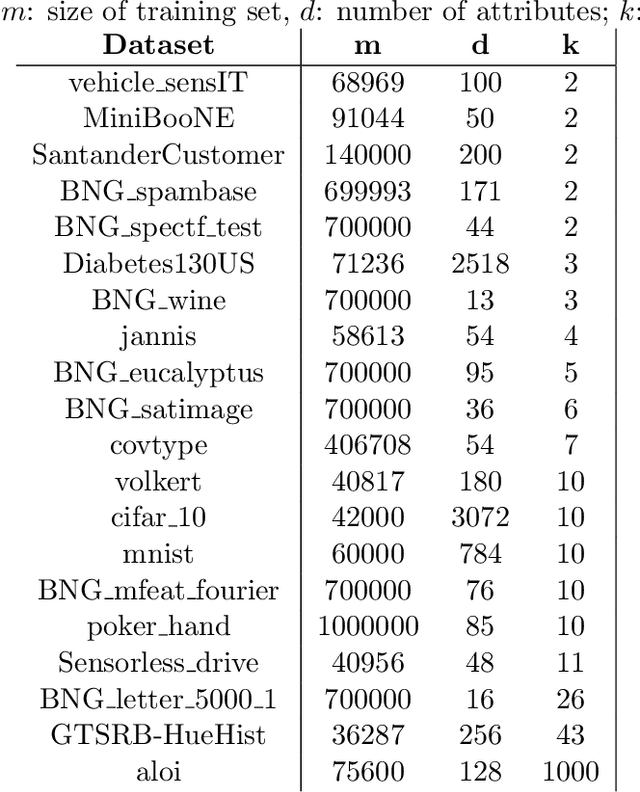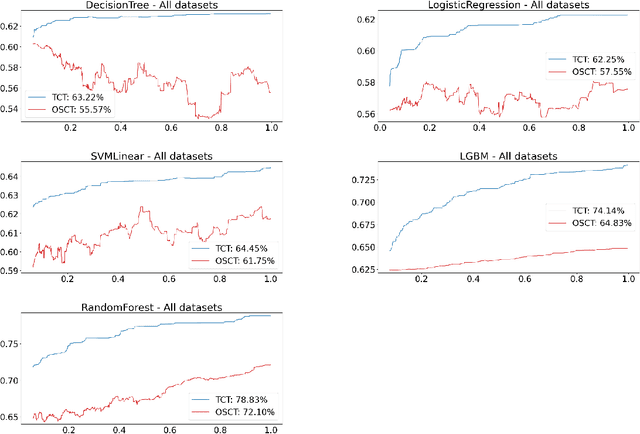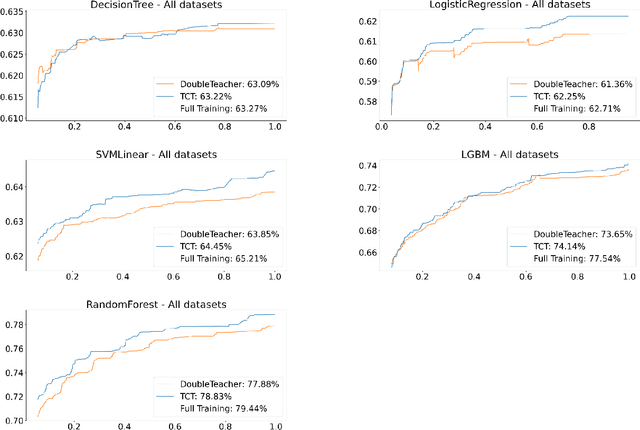Time-Constrained Learning
Paper and Code
Feb 04, 2022



Consider a scenario in which we have a huge labeled dataset ${\cal D}$ and a limited time to train some given learner using ${\cal D}$. Since we may not be able to use the whole dataset, how should we proceed? Questions of this nature motivate the definition of the Time-Constrained Learning Task (TCL): Given a dataset ${\cal D}$ sampled from an unknown distribution $\mu$, a learner ${\cal L}$ and a time limit $T$, the goal is to obtain in at most $T$ units of time the classification model with highest possible accuracy w.r.t. to $\mu$, among those that can be built by ${\cal L}$ using the dataset ${\cal D}$. We propose TCT, an algorithm for the TCL task designed based that on principles from Machine Teaching. We present an experimental study involving 5 different Learners and 20 datasets where we show that TCT consistently outperforms two other algorithms: the first is a Teacher for black-box learners proposed in [Dasgupta et al., ICML 19] and the second is a natural adaptation of random sampling for the TCL setting. We also compare TCT with Stochastic Gradient Descent training -- our method is again consistently better. While our work is primarily practical, we also show that a stripped-down version of TCT has provable guarantees. Under reasonable assumptions, the time our algorithm takes to achieve a certain accuracy is never much bigger than the time it takes the batch teacher (which sends a single batch of examples) to achieve similar accuracy, and in some case it is almost exponentially better.
 Add to Chrome
Add to Chrome Add to Firefox
Add to Firefox Add to Edge
Add to Edge